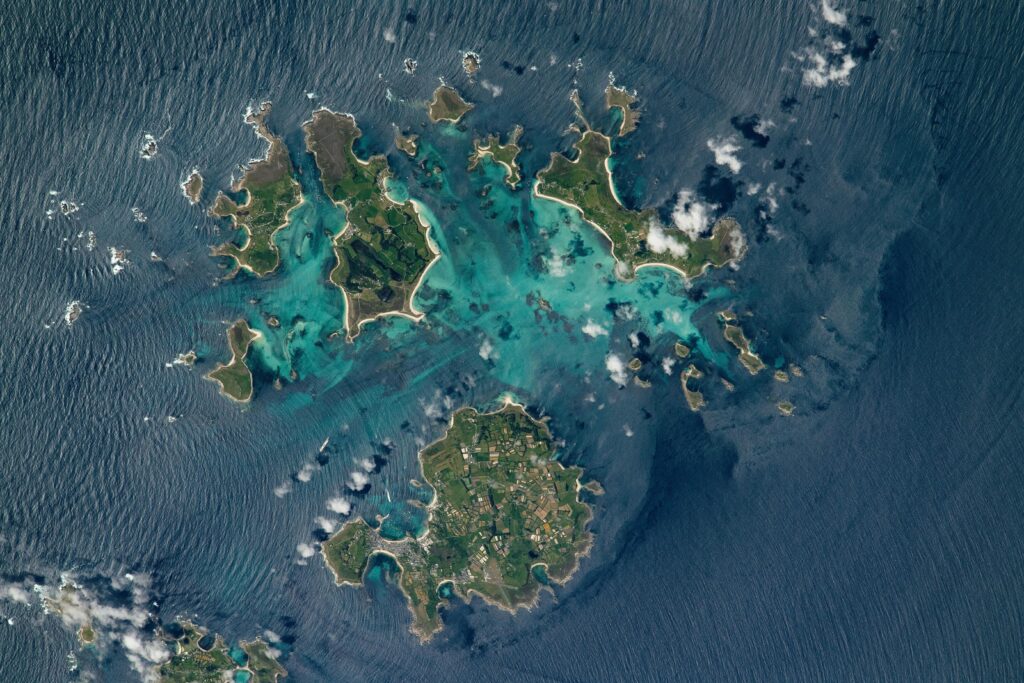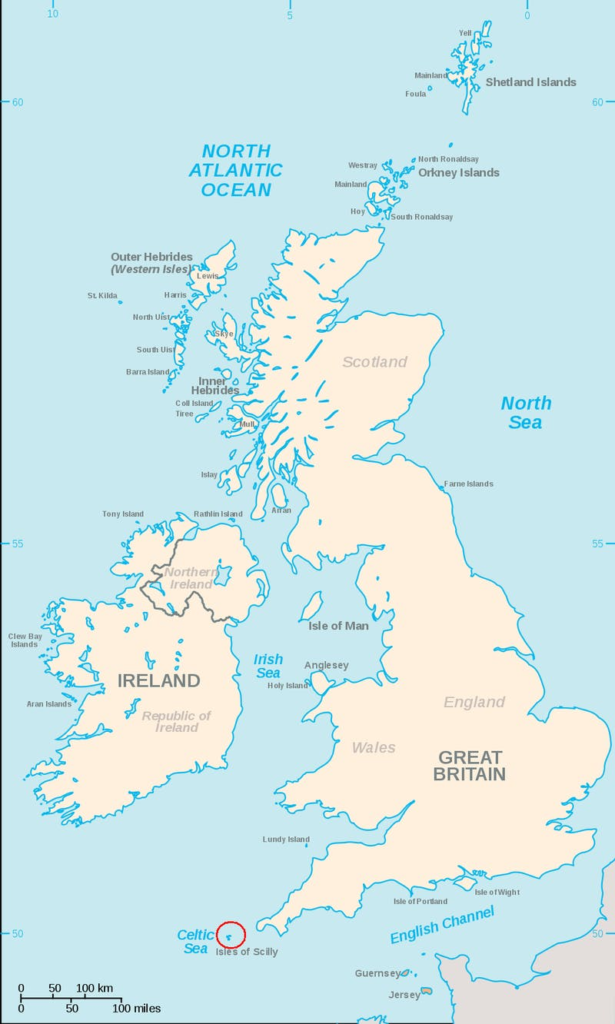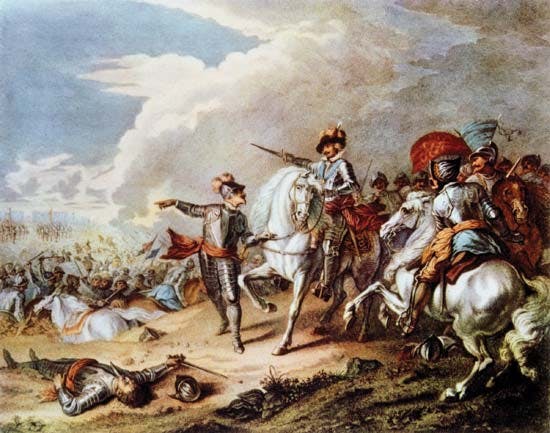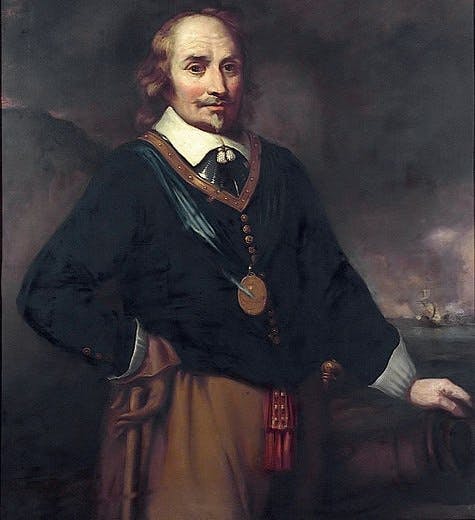Tucked off the southwest coast of England, the Isles of Scilly seem an unlikely location for participating in the longest military conflict ever recorded. Yet due to a declaration of war in 1651 that went unresolved for over three centuries, the tiny island chain found itself in a centuries-spanning feud with the Netherlands by technicality. Though no casualties ever resulted, the absurd 335 Year War between Scilly and the Dutch makes for a peculiar historical footnote even though it is technically the longest war in history.
An Isolated Island Chain
The Isles of Scilly consist of five inhabited islands and hundreds of uninhabited rocky spits located 45 km off the Cornish peninsula. Only two of the islands are populated year-round, St. Mary’s and Tresco, with a total population around 2,000. The islanders historically relied on fishing, farming flowers and shipbuilding, with smuggling also prominent through the 18th and 19th centuries.
The archipelago’s isolated position allowed the seafaring Scillonians to remain neutral through many European conflicts over the centuries. Their life carrying on unaffected by the political turmoil of Britain’s interior.

But that changed in the mid-17th century as tensions boiled over in England between King Charles I and Parliament, eventually sparking civil war. The Scilly Islands found themselves reluctantly drawn into the bloody domestic conflict.

Context within the English Civil War
Though separated from the Cornish mainland, Scilly was nominally under Royalist control when civil war broke out in England between King Charles I and Parliamentarian forces in 1642. But the distant isles remained peaceful as political hostilities tore through Britain.
That ended in 1644 when Parliamentarian commander Robert Blake captured the islands to use as a strategic base for his fleet. After Charles I’s 1649 execution, his son Charles II continued battling Parliamentarian leader Oliver Cromwell from Scilly until 1651 when Cromwell’s navy finally besieged the Royalist stronghold.

Outgunned and blocked by land and sea, the Royalists had no choice but to surrender. Now under Parliamentary control, the Isles of Scilly seemed to retire again from conflict. But one unresolved maritime skirmish would unexpectedly prolong their discord.
An Opportunistic Act of Betrayal
As momentum shifted against the Royalists, their former allies the Dutch elected to change allegiances and join Parliament’s side in 1648. They’d identified Cromwell as the likely victor in the civil war and cynically sided with who they saw as eventual winners.
The Royalists considered this treason after years of Dutch-English alignment. Infuriated, Royalist ships began raiding Dutch vessels in the Channel as retaliation. By 1651, these raids had inflicted serious economic losses on Dutch merchants.
With the Royalist fleet cornered at Scilly, the Dutch saw an opportunity for payback. A fleet of twelve warships sailed for Scilly, demanding the Royalists pay reparations for their piracy against Dutch traders.
When rebuffed, Dutch Admiral Maarten Tromp issued a declaration of war against the Isles of Scilly on March 30, 1651. He proceeded to blockade the islands, though no cannon fire or combat occurred. Just a tense naval standoff. This was just the start of the longest war.

Aftermath of the Royalist Defeat
Barely three months later in June 1651, Cromwell forced the Royalist navy to surrender at Scilly, leaving Parliament fully controlling Britain. Having achieved their mission, the Dutch fleet simply sailed home without signing a peace treaty or truce with the islands they’d declared war on earlier that year.
The hurried departure created a peculiar technicality – Scilly remained at war with the Netherlands for centuries to come. But amidst the volatile politics and power shifts of 17th century Britain, the small-scale conflict went forgotten in the chaos. It held no consequences for the tiny islands.
Rediscovering the 335 Year War
In 1985, a local historian in Scilly named Roy Duncan was researching the civil war when he found references to the Dutch declaration of war in 1651. The uneasy blockade and hostility technically meant the islands remained in a legal state of war even centuries later.

Amazed by this discovery, Duncan contacted the Dutch Embassy in London to see if their records reflected the archaic war declaration or any resolution. Sure enough, the Dutch confirmed they’d never signed an official peace treaty with Scilly following 1651. Duncan had unearthed the longest war by accident.
Although more symbolic than violent, Duncan moved to finally make peace. He invited the Dutch ambassador to Britain, Rein Huydecoper, to visit Scilly and sign a treaty ending 335 years of technical war. On April 17, 1986, Huydecoper traveled to the islands and formally declared the longest war in history concluded.
Origins of the War Disputed
Some historians dispute whether the actions in 1651 constituted a “real” war, arguing Admiral Tromp acted without proper Dutch governmental approval in blockading Scilly and lacked authority to issue a war declaration.
Since no armed engagement occurred, they claim the bad blood between Scilly and the Netherlands never rose to the level of formal warfare. Furthermore, as Dutch ships simply returned home after the Royalist defeat, many considered the matter resolved.
Yet the 1986 treaty indicates that under international law, the countries remained in an unsettled state of hostility. Regardless of the exact circumstances in 1651, officials thought it prudent to finally clarify lasting peace between the old foes after 335 years of technical discord.
A Bloodless Conflict for the Record Books
No matter the legal nuances, the fact remains that Scilly and the Netherlands experienced over three centuries of unofficial animosity before officially reconciling. The 335 Year War makes a bizarre footnote in the history of both tiny Scilly and naval powerhouse Netherlands.
And not a single person died during this unparalleled centuries-long conflict. The Isles of Scilly witnessed more bloodshed from shipwrecks and piracy than their own experience as accidental participants in history’s longest war.
While other wars destroyed empires and wiped out generations, the 335 Year War remains a peculiar, bloodless warning about the power of careless diplomatic oversights. Even the smallest conflicts risk enduring consequences when left unresolved. From now on, the Dutch and Scillonians know to double check for any unfinished paperwork before waging war.

 Additional Facts
Additional Facts
28 Miles
The Isles of Scilly are only 28 miles off the coast of Land’s End in Cronwall, a 15 minute helicopter ride from mainland England.
2,200
That is the population of the Isles of Scilly with 5 inhabited islands.
300
In one of the deadliest shipwrecks the Isles of Scilly ever saw 300 Germans died in 1875 when an oceanliner SS Schiller was wrecked off Scilly. The islanders managed to rescue 37 people, and the Schiller Shelter was built to commemorate them by the German government, and to thank the islanders.



